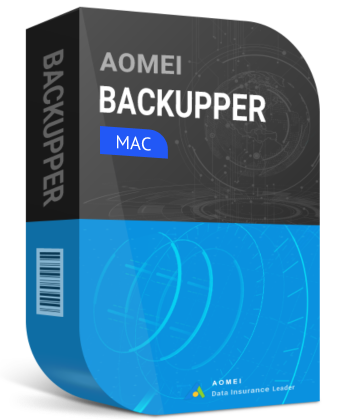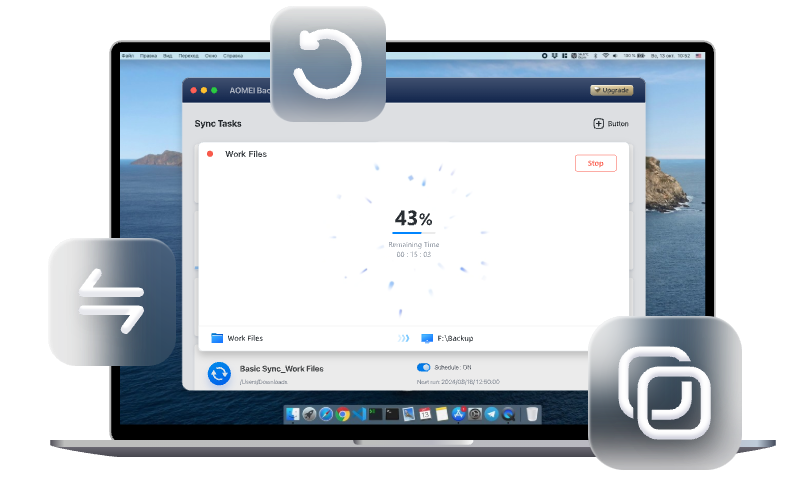How to Stop iCloud Sync on Mac: 3 Common Scenarios
Discover how to stop iCloud sync on your Mac efficiently and troubleshoot the file missing issue after disabling iCloud sync. Scroll down to learn more.
Common reasons for disabling iCloud sync
iCloud is a powerful tool for keeping your data synchronized across multiple Apple devices. However, there are several reasons why you might want to disable iCloud sync on your Mac.
- Limited iCloud Storage: Apple offers a limited amount of free iCloud storage, typically 5GB, which can quickly fill up if you’re syncing large files like photos, videos, or backups.
- Reducing Bandwidth Usage: If you’re on a limited or slow internet connection, iCloud sync can consume a significant amount of bandwidth, especially when uploading or downloading large files.
- Preventing Data Overwrites or Sync Conflicts: Syncing data across multiple devices can sometimes result in conflicts, where the same file or piece of information is modified in different ways on different devices. This can lead to data overwrites or duplicates, creating confusion and potential data loss.
- Privacy Concerns: When you enable iCloud, your data—ranging from photos and documents to contacts and calendars—is stored on Apple’s servers. Some users prefer to keep their data solely on their local devices to minimize the risk of unauthorized access or data breaches.
If you have the same concerns, learn how to disable iCloud sync on Mac in the coming part.
👉 Stop syncing Desktop and Documents Folders
👉 Stop syncing Photos
👉 Turn off iCloud completely
👉 Fixed: Files missing after disabling iCloud sync
👉 Bonus: Sync files on Mac with free Mac sync software👍
How to stop iCloud sync/backup on Mac
This part will discuss 3 common scenarios of disabling iCloud sync on Mac. Get step-by-step instructions below.
Stop syncing Desktop and Documents Folders
If you're looking to stop syncing your Desktop and Documents folders on your Mac, you're likely aiming to free up some iCloud storage or keep your files more localized. Here's how you can easily disable this feature:
1. Choose Apple menu > System Settings (or System Preferences). Then click Apple ID > iCloud.
2. Under Apps Using iCloud, click iCloud Drive.
3. In the pop-up window, disable the Desktop & Documents Folders toggle.
Stop syncing Photos
Disabling syncing Photos on Mac can save you a lot of iCloud space. Here's how to stop Photos syncing to iCloud:
1. Launch the Photos app from your Dock or Applications folder.
2. In the Photos app, click on Photos in the top menu bar and select Settings (or Preferences, depending on your macOS version).
3. In the Settings/Preferences window, click on the iCloud tab and uncheck iCloud Photos to stop syncing your photos with iCloud.
4. A prompt may appear asking if you want to download a copy of your iCloud photos to your Mac. Choose Download Originals to this Mac if you want to keep a local copy, or select Remove from Mac to free up space.
Turn off iCloud completely
If you want to turn off iCloud completely on your Mac, you'll be disconnecting your Mac from all iCloud services, including iCloud Drive, Photos, Mail, Contacts, and more. Here's how you can do it:
1. Choose Apple menu > System Settings (or System Preferences).
2. Click Apple ID. Scroll down to the bottom of the Apple ID settings and click on Sign Out.
3. A prompt will appear asking what data you want to keep on your Mac. You can choose to keep a copy of your iCloud data (like Contacts, Calendars, and Safari data) on your Mac, or you can opt to remove everything.
4. You may be asked to enter your Apple ID password to confirm the sign-out process.
Fixed: Files missing after disabling iCloud sync
Disabling iCloud sync on your Mac is a straightforward process, but it can sometimes lead to unexpected issues, such as missing files or data. If you’ve recently turned off iCloud sync and noticed that some of your files, photos, or other data seem to have disappeared, don’t panic. Use one of the following ways to get your data back.
Way 1: Checking iCloud.com
The first step in recovering missing files is to check iCloud.com. Log in with your Apple ID and navigate to the relevant section, such as iCloud Drive, Photos, or Contacts. If your data is still stored in iCloud, you can manually download it back to your Mac.
Way 2: Re-enabling iCloud Sync Temporarily
If you’re unable to find your missing data on iCloud.com, another option is to temporarily re-enable iCloud sync. This action may restore the files or data to your Mac by syncing them from iCloud. After ensuring all necessary files are downloaded, you can decide whether to keep iCloud sync enabled or disable it again.
Way 3: Checking Your Local Storage
In some cases, your files may not be missing—they might just be stored in a different location on your Mac. When you disable iCloud sync, certain files may be moved to a local folder on your Mac, such as your Documents or Downloads folder. Take the time to search your Mac’s storage for any relocated files.
Way 4: Restoring Files from a Backup
If you regularly back up your Mac using Time Machine, you may be able to recover missing files from Time Machine. Make sure to choose a backup from a date before you turned off iCloud sync to ensure you recover the correct version of your files.
Bonus: Sync files on Mac with free Mac sync software
Unexpected errors can occur on your Mac at any time, so it's essential to back up your important data. AOMEI Backupper Mac, a leading free sync software for Mac, offers a dependable solution by allowing you to sync files and folders across different locations.

-
You can sync files from source to destination with Basic Sync or Mirror Sync. You can also sync files both sides with Two-Way Sync.
-
You can select folders on the local disk, external hard drive, network location or NAS device as the sync source or destination.
-
The program offers 5 schedule modes to help you sync folders automatically, including Once, Hourly, Daily, Weekly and Monthly.
-
It runs smoothly on macOS 14/13/12/11/10.15.
Don't wait - download AOMEI Backupper Mac and give it a try today! To sync Mac folders using AOMEI Backupper, click New Task in the main interface. Then, choose sync type > select sync source/destination. Finally, click Sync to run the task.
Wrapping things up
That’s all about how to stop iCloud sync on Mac. Disabling iCloud sync on your Mac can offer greater control over your data, improve system performance, and address concerns related to privacy, storage, or bandwidth. However, it's essential to approach this decision thoughtfully, as it comes with trade-offs, such as the potential loss of seamless integration across your Apple devices.
By the way, to protect your important data on Mac, you can sync files or folders with the best free Mac sync software – AOMEI Backupper. It enables you to transfer files between Macs, from Mac to external drive and from Mac to NAS device, etc. Don’t hesitate to try it out!

